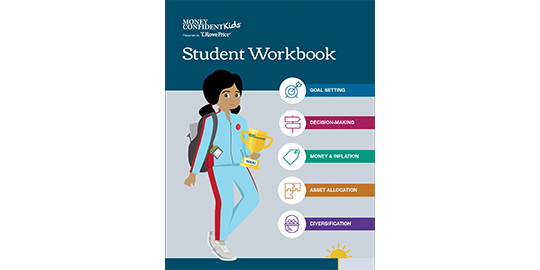
Inspire good money habits from an early age
The Money Confident Kids® program gives parents and educators the financial education tools to help kids think now about saving, spending, and investing for a lifetime of good money habits.
You don’t have to be a financial expert to talk with kids about money
The program is based on 5 Simple Lessons for middle to high schoolers. Go through lessons step by step or focus on a single financial skill.
Guides, lesson plans, and activities are all here—and for free. So you can explore at your own pace and use what works for you.
Helping kids think long term
At the heart of all lessons is showing how every financial decision is associated with a time horizon.
This concept comes to life through a relatable story about “Nikki.” Through her journey from seventh grade to college and beyond, kids see how to set short- and long-term goals and work to achieve them.


Get a snapshot of each lesson
1. Goal Setting
Saving money starts with setting a goal. Kids explore financial goal setting and how it can make short- and long-term saving feel easier and more attainable.


2. Decision-Making
Holding off on buying things is hard. By knowing when to save or spend and how to track money, kids can learn important financial decision-making skills from an early age.
3. Money and Inflation
It’s important to help kids understand the value of a dollar and how the value of money can change and affect their purchasing power in the future.


4. Asset Allocation
Kids may not have assets, but it’s never too early to learn about investing. This lesson breaks down a key beginning investing concept to show how to help make money grow.
5. Diversification
The idea behind this concept is simple: “Don’t put all your eggs in one basket.” Show kids what that means in the real world to create an investment portfolio.

202505-4484792
Explore more financial education resources

Additional Learning
More tools and activities to engage kids in money conversations.

About Us
How the friends at T. Rowe Price support learners of all ages.
You are using an unsupported browser that might prevent you from accessing certain features on our site
We suggest clicking an icon below to download a supported browser.
